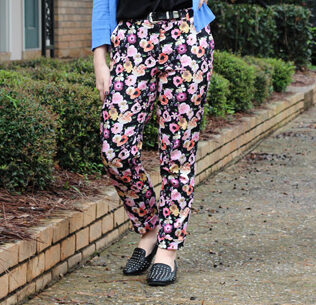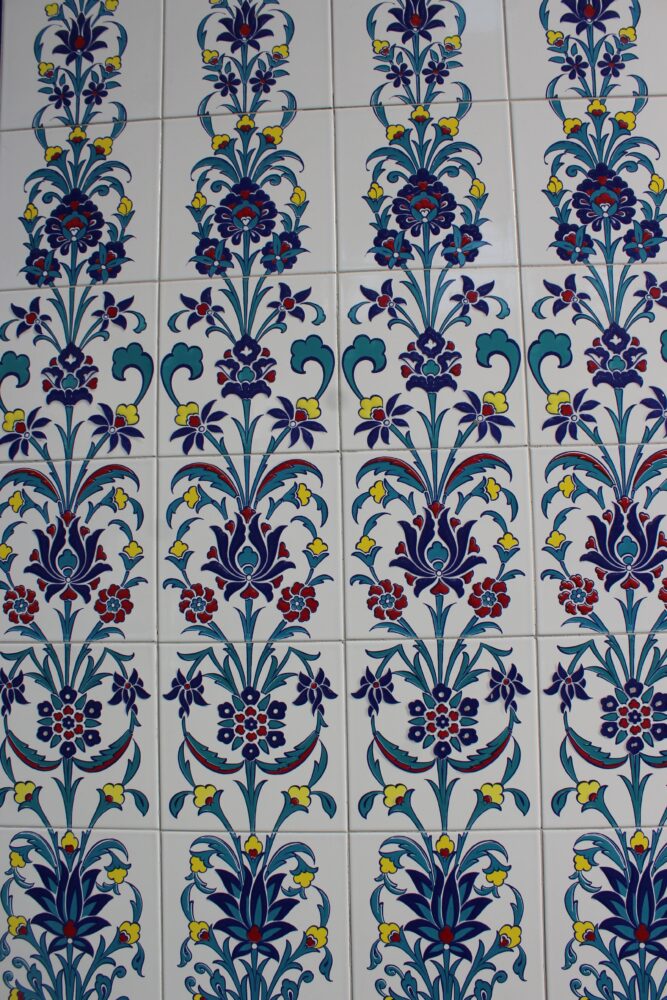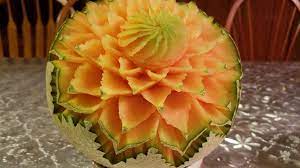Humans have always viewed flowers as a source of beauty, both for their variety in colors as well as the intricate designs that are present in flower heads. Today, we put floral designs on just about any item, ranging from clothing to handbags to bathroom tiles. They can also be found in many historical artifacts, such as vases or jugs. This aesthetic has been well appreciated across the world, including Thailand.

Figure 1: Floral pants

Figure 2: Floral Tiles
In Thailand, they appreciate the floral aesthetic in many ways, and in particular, they like to create floral designs in melons. This practice dates back to 1364, and has occurred in schools ever since then. It has become a national competition, and a source of pride among the locals. For my upcycling project, I would like to create such a design, and hope to do so with a cantaloupe. It will conform to a floral aesthetic, with petals circling around the “seeds”. An example can be seen below.

Figure 3: A floral cantaloupe
Sources:
www.betterlatethannever.info/thai-art-fruit-vegetable-carving/
https://upload.wikimedia.org/wikipedia/commons/a/a2/Remixing_Floral_Pants_from_H%26M_%2816973987741%29.jpg
https://pxhere.com/en/photo/546510

2 Comments. Leave new
Hi Dylan, I enjoyed reading about the aesthetic and its history. I am wondering about maybe 70’s floral aesthetics and how that differs or is similar to what you are intending.
Dylan, this is exceptionally creative and culturally rich. It would indeed make for a fantastic aesthetic. The fact that it dates back to 1364 highlights the longstanding appreciation in Thai society for the floral aesthetic. Are there any special tools that you need to purchase to make the intricate designs? Another question that arose while reading this: Is there a specific flower or type of petal you have in mind to use in your design?